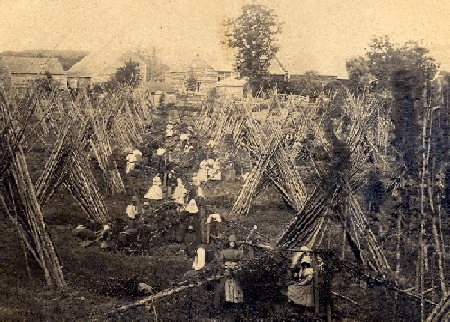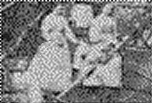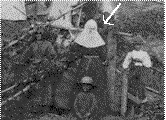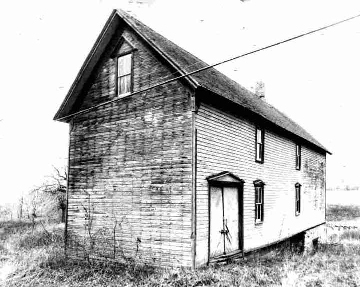Hops in East Schodack
What is the first word that comes to mind when you hear the word 'hops'? I think most people would say 'beer' as hops are an integral part of the brewing process because their bitter flavor offsets the sweetness of the malt. The next question is what do hops have to do with East Schodack? Surprisingly, they were grown here in the nineteenth century.

I discovered this information through a chance donation to the Historian's office. A resident who had been collecting East Schodack pictures and memorabilia for years decided to donate the collection to the Historian's office since he was cleaning out his house prior to a move to Florida. Included with the pictures was a photograph of people working in a hops field in East Schodack according to the caption on the picture.

My job as Historian was to try to find more information about the picture as to age and the significance of the additional details shown in the image. My first interest was to try to determine the age of the photograph. The clothing worn by the people shown is a good clue to age since clothing trends do not last very long. For example, if you saw an image of someone with bell bottom pants, love beads and a tie-dyed shirt, you would probably think of the 1960s rather than today. For this picture's age, the suspenders on the men's pants, the women's large bell-hooped skirts and center parts of their hair point to a hundred years earlier than my first example; that is to say, I think the picture was produced in the 1860s. I believe this is the oldest photograph in our collection.

Another clue is the absence of men in the picture. Most of the work is being done by women and children, not the usual procedure. The time period may have been during the Civil War and the men of the community were off fighting. These statements are just conjecture on my part since no records say definitively the date of the picture and who these individuals were.
The 1865 New York State Census gives us additional information to verify that hops were grown in East Schodack. This census is very useful in that it states what type of crop a farmer produced rather than just saying 'farmer' as the Federal Censuses report in their population schedules. In the portion of the 1865 census for East Schodack, Isaac Boyce had 5 acres devoted to hops and produced a harvest of 1,000 pounds. Another producer was George Smith who also harvested 1,000 pounds of hops. Other hops farmers in East Schodack were William Westfall, Joel Morey and Reuben Poyneer. The influence of these early families remains today in the names of local roads in the town such as Boyce Road and Poyneer Road. Morey Park is just to the west of present Nassau Lake.
The exact location of the farm shown in this image may never be known. I looked at the complex of barn buildings along the north side of Route 150 just east of the 9 & 20 intersection thinking these might be the buildings in the photograph. A closer examination shows the roof lines of the barns are not the same as those in the picture. A few of the small outbuildings appear the same, but it is possible the barns in the picture from the 1860s don't even exist today.
Another curious feature of the hops field photograph is the presence of a nun near the center front of the picture. She may be supervising some young orphans in her care. Some research I explored indicated that women and children and even orphans came to harvest the hops flowers to escape the oppressive conditions in the cities. Again, any assumptions about the work force shown in the photo are conjecture on my part.

Hops are perennial plants that flower for many seasons. The climbing vine can reach up to 15 to 25 feet in height by the end of the growing season. The cone shaped flowers are the part many refer to as hops. The vines were grown on the long poles put in the ground in an inverse-teepee shape with the bottom narrow and the top wide. The tops flower in late August or early September. The vine would be cut at the bottom, then the pole and vine would be put across a support and the flowers picked. The farmer had to dry the blossoms in a Hop House, a four-room two-story building. The finished product was pressed into bales similar to old hay bales and brought to the breweries.

The growing of hops flourished in the United States in the nineteenth century. New York State was the leading producer of hops in 1849 although the crop was most prevalent in central New York. The East Schodack area was never a major producer of hops. National production peaked around 1880. Starting in 1909 downey mildew, a "blue mold" ruined entire crops with the effect not unlike the blight that created the earlier potato famines in Ireland. In two years the farmers hit by the downey mildew were out of business. By 1914 the farmers whose hops had survived were hit by aphid attacks forcing more out of business. Competition from middle men, more productive lands in the west and the cost of fungicides for downey mildew led to the decline of hops growing in New York State. For example, the 1916 Farm Directory that I have in my office shows no one in any part of Schodack still growing hops. The main production centers today are in the northwestern part of the country in California, Washington and Oregon.
Diane Hutchinson,
Town Historian
2011

